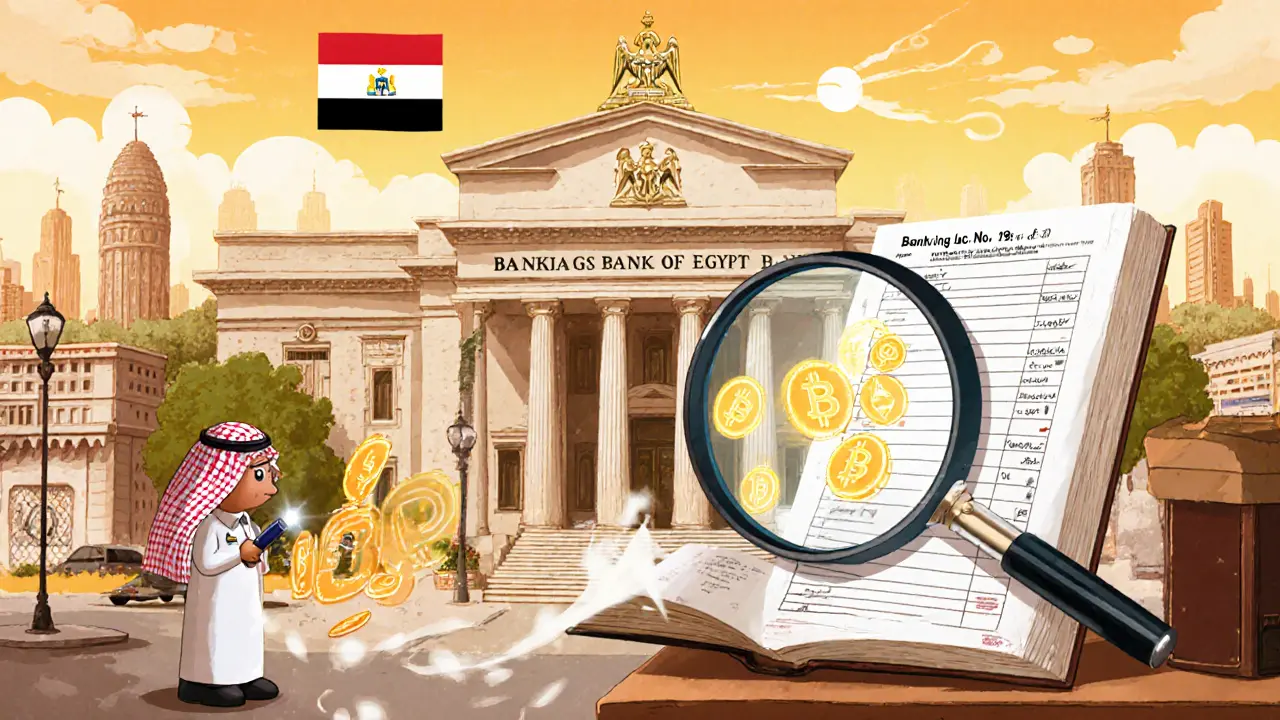Egyptian Banks and the Crypto Landscape
When you think about Egyptian banks, the national financial institutions that manage deposits, loans, and payments in Egypt. Also known as Egyptian banking sector, they play a key role in shaping how digital assets are adopted locally. In the last few years, they have moved from pure conservatism to becoming gatekeepers for digital finance. This shift means anyone dealing with crypto in Egypt must understand the banking angle, from account opening to cross‑border transfers. Below we break down the main pieces that connect banks to the crypto world.
Key Areas Where Egyptian Banks Interact with Crypto
The first piece of the puzzle is cryptocurrency regulation, the set of laws and guidelines that dictate how digital assets can be used, traded, and reported. In Egypt, the Central Bank has issued strict AML/KYC rules, and those rules feed directly into how banks operate. Egyptian banks must enforce these rules, which in turn influences the flow of stablecoins and other tokens. Speaking of which, stablecoins, cryptocurrencies pegged to a stable asset like the US dollar have become a popular bridge for locals who want crypto exposure without currency volatility. Banks that offer custodial services for stablecoins help users move money between traditional accounts and blockchain wallets. The relationship can be summed up in a simple triple: Egyptian banks encompass cryptocurrency regulation, which influences stablecoin adoption. This chain shows why any change in regulatory language instantly reshapes the services banks can offer.
Another growing sector is crypto mining, the process of validating blockchain transactions and earning new tokens as a reward. While most mining farms sit outside city limits, the energy consumption and equipment financing often involve local banks. When a miner needs a loan to buy ASICs or a line of credit for electricity bills, the bank evaluates the risk through the lens of existing crypto regulations. This creates a second semantic link: cryptocurrency regulation drives bank decisions on crypto mining financing. On top of that, miners increasingly use stablecoins to pay for electricity and hardware, tying the three entities together in a loop that impacts both the banking sector and the broader crypto ecosystem.
Finally, crypto airdrops, free token distributions used to promote new projects or reward community participation are making headlines in Egypt. Airdrops can flood personal wallets with tokens, triggering tax and reporting obligations that banks must monitor. When an airdrop lands in a bank‑linked wallet, the institution must verify source of funds to stay compliant with AML rules. This creates a third triple: crypto airdrops influence bank compliance requirements, which are shaped by cryptocurrency regulation. Understanding how airdrops work, the risks they carry, and the reporting steps can save users from unnecessary penalties and help banks keep their risk profiles in check.
All these pieces—regulation, stablecoins, mining, and airdrops—form a tightly knit ecosystem where Egyptian banks are both enablers and gatekeepers. Below you’ll find a curated collection of articles that dive deeper into each topic, from detailed guides on navigating bank compliance to practical tips for leveraging stablecoins and protecting yourself from risky airdrops. Use this resource to stay ahead of the curve and make informed decisions in Egypt’s evolving financial landscape.
How Egyptian Banks Monitor Cryptocurrency Transactions - 2025 Guide
Explore how Egyptian banks monitor cryptocurrency transactions under Law No. 194, the role of the Central Bank, compliance tech, challenges, and future outlook.





